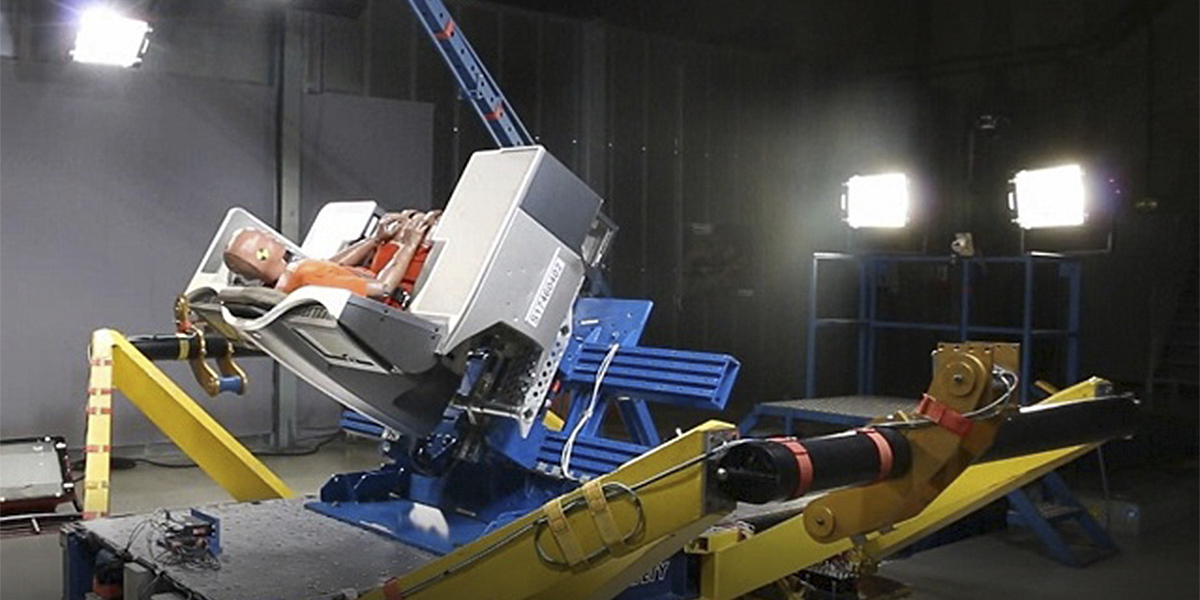Sharp Edges and Points Safety Test
In the automotive industry, ensuring passenger safety is paramount. One critical aspect of this effort involves testing sharp edges and points within vehicles to prevent potential injuries during accidents or normal use. The Sharp Edges and Points Safety Test is a specialized procedure aimed at identifying and mitigating risks associated with these features.
The test evaluates how exposed sharp edges and points can interact with the human body, particularly in scenarios where accidental contact might occur. This includes testing door handles, interior trim components, and other areas that may come into contact with passengers or pedestrians during an impact. By simulating real-world conditions, this test ensures that vehicles meet strict safety standards and provide a safer environment for occupants.
The methodology involves several key steps. First, the automotive manufacturer or testing laboratory identifies all exposed edges and points within the vehicle. These areas are then carefully measured and documented. Next, appropriate dummy subjects (often based on ISO 3471) are used to simulate potential human interaction with these surfaces.
The test is conducted under controlled conditions that mimic various collision scenarios. This allows for a comprehensive assessment of how the vehicle might behave in an accident, focusing specifically on the safety implications of sharp edges and points. Post-test analysis involves evaluating both the physical integrity of the vehicle components and any potential injuries sustained by the dummy subjects.
One of the primary challenges in this testing process is accurately capturing the dynamic nature of collisions. To address this, modern testing facilities employ advanced instrumentation capable of measuring forces, accelerations, and deformation rates during simulated impacts. This data helps to refine test protocols and improve overall vehicle safety designs.
The results of these tests are critical for several stakeholders within the automotive sector. Quality managers rely on them to ensure compliance with international standards such as ISO 3471 and other relevant regulations. Compliance officers use this information to verify that their products meet legal requirements, while R&D engineers leverage the insights gained from testing to innovate safer vehicle designs.
In summary, the Sharp Edges and Points Safety Test plays a vital role in enhancing passenger safety by identifying potential hazards early in the design process. Through rigorous testing procedures and advanced instrumentation, this service helps automotive manufacturers produce vehicles that not only meet but exceed global safety expectations.
Applied Standards
| Standard Reference | Description |
|---|---|
| ISO 3471:2005 | Human body protection in motor vehicles – Test procedures for the assessment of the protection provided by head restraints. |
| ASTM F963-17a | Safety test methods and performance specifications for consumer products intended to be used solely or primarily by children under 14 years of age, including toys, child care articles, and certain other products. |
The Sharp Edges and Points Safety Test aligns closely with several international standards aimed at enhancing vehicle safety. Compliance with these standards ensures that manufacturers can confidently market their vehicles as safe and reliable. By adhering to such rigorous guidelines, automotive companies contribute significantly to public safety.
Eurolab Advantages
- State-of-the-art testing facilities equipped with the latest instrumentation.
- Experienced and certified technicians who specialize in automotive safety testing.
- Dedicated teams focused on ensuring compliance with international standards.
- Comprehensive reporting services providing detailed insights into test results.
EuroLab offers unparalleled expertise in conducting Sharp Edges and Points Safety Tests. With our cutting-edge facilities and experienced team, we provide a robust framework for assessing potential risks associated with exposed edges and points within vehicles. Our dedicated approach to compliance ensures that your products meet the highest safety standards.
Customer Impact and Satisfaction
- Enhanced trust among consumers regarding vehicle safety features.
- Increased market competitiveness through advanced design improvements.
- Reduced liability risks for manufacturers due to proven compliance with standards.
- Potential cost savings from early identification and rectification of design flaws.
- Accurate measurement techniques ensure precise evaluation of edge sharpness.
- Advanced instrumentation allows detailed analysis of impact forces and deformations.
- Standardized testing procedures guarantee consistent results across different models.
- Detailed reports provide actionable insights for continuous improvement in safety features.
The Sharp Edges and Points Safety Test offers numerous benefits to our customers. By leveraging this service, automotive manufacturers can significantly enhance their reputation while reducing potential liabilities. Additionally, the detailed reports generated from these tests help drive innovation, leading to safer vehicles that meet stringent regulatory requirements.





